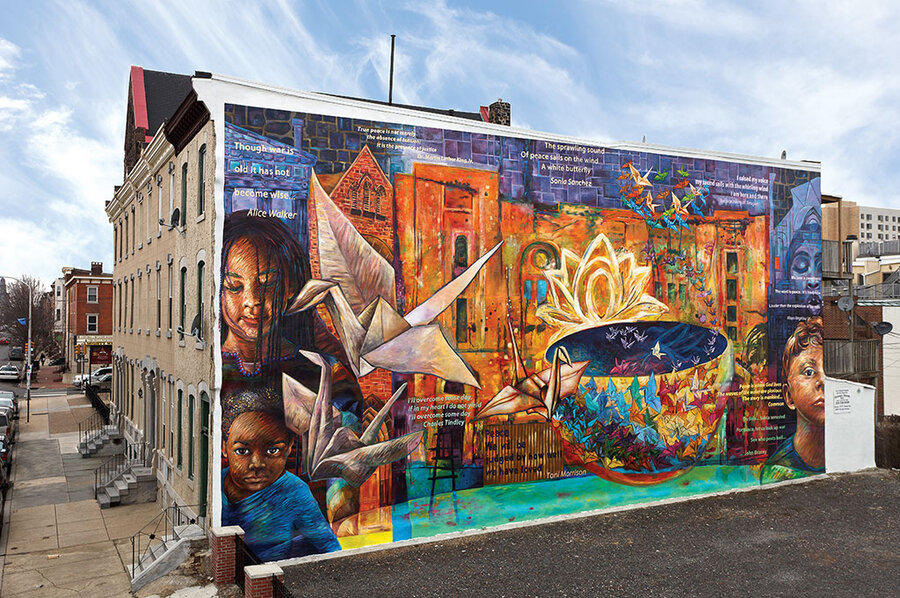How can public art be preserved and shared?
Loading...
Since she founded the City of Philadelphia Mural Arts Program in 1984, Jane Golden has helped adorn her city with more than 3,800 works of art.
Along the way, like other artists, curators, and custodians of public art around the world, Ms. Golden has tackled the challenge of ensuring the names and stories behind the work are preserved and shared.
Mural Arts is the home of, for example, the tale of a 2008 mural portraying the perseverance and dignity of an all-black unit in World War II. Artist Marcus Akinlana spoke with members of the Philadelphia chapter of the Tuskegee Airmen as he created “They Met the Challenge.” Golden is hoping a partnership with Temple University will help her build a database with more stories, which are also shared by docents who give mural tours.
Meanwhile, Denver has made docents out of artists like Jim Green. Mr. Green, who works with sound, is among the dozen or so who have recorded interviews. An art lover can stand on a downtown Denver street, dial 877-DENARTS, and hear Green’s story of a man who knelt on the sidewalk to hear one of Green’s recordings emanating from grates.
Denver is among many cities that set aside a percentage of capital construction budgets for art and have online guides to the resulting public collections. Individual artists also have internet archives. Bianca Nandzik, a German muralist, wanted something comprehensive: one site to which anyone could turn to learn more about a piece of public art anywhere.
Ms. Nandzik asked people to email photos and details, getting permission from artists before publishing their work on muralguide.org. Nandzik has put updates on hold until she has more resources. Her collection, an online museum of works from all over the world, can still be accessed, though.
In Philadelphia, Golden calls such labors “a way to keep the work alive and present.”







